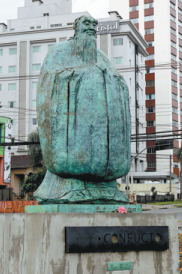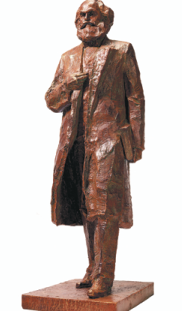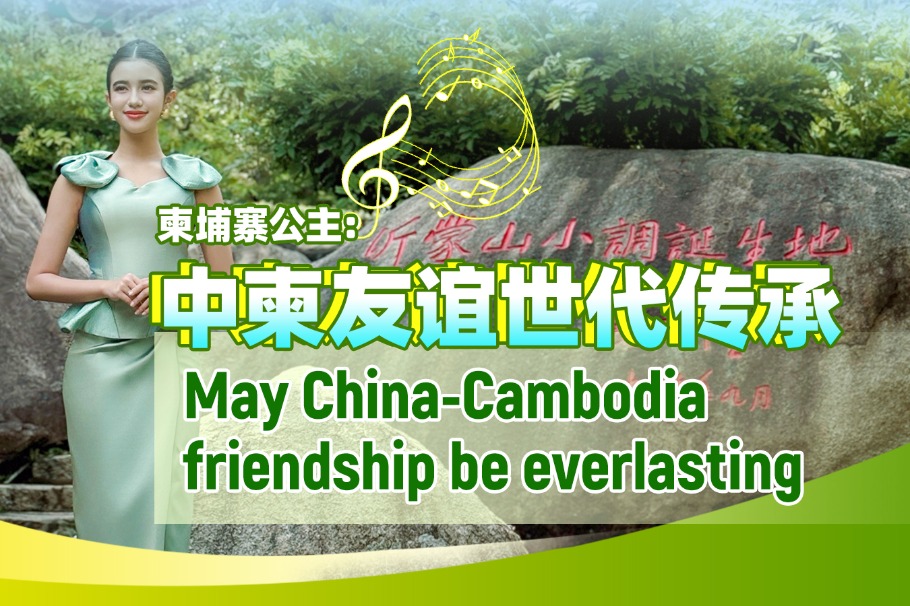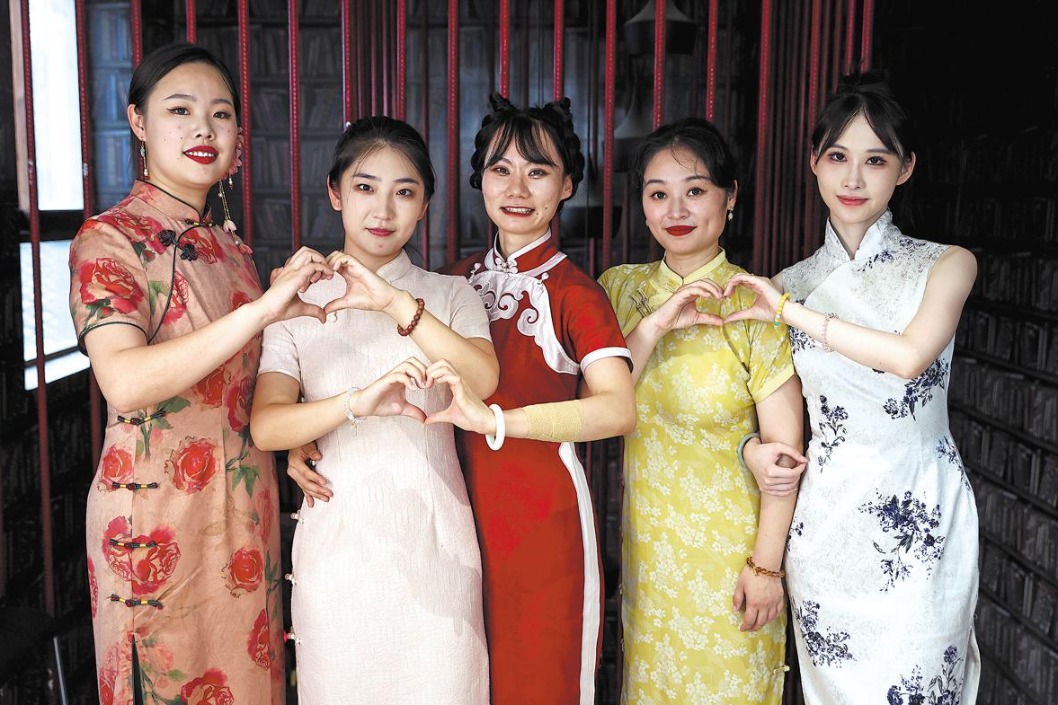Sculpting a legacy
In his role as director of the NAMOC, Wu Weishan is helping to elevate the museum's cultural influence, Lin Qi reports.

On Jan 19, 2020, the National Art Museum of China in Beijing launched A Tribute to Donors, an exhibition of unprecedented scale that presented the richness and diversity of donated art the museum has received from individuals over the last six decades.
But three days later, the museum announced a temporary shutdown of the show due to the then-worsening COVID-19 situation. It was not until May 13 that it was reopened to the public, initially receiving, at most, 500 visitors a day.
On that day, the first five visitors entering the museum building were surprised to be greeted by Wu Weishan, the museum director. He welcomed them by giving catalogs compiled for the exhibition.
"The exhibition shows utmost respect to those who donated art which they valued to the State. The spirit of their generosity to share priceless cultural assets with the public should touch everyone entering the museum," Wu said at the time.
He said the closure lasted 110 days, and the museum would undertake the dual responsibilities of continuing to provide quality public service and enhance public health measures amid the pandemic.
The pandemic has put administrators of global museums under considerable stress for over a year. Exhibitions were canceled or have been postponed, and visitor numbers have reduced due to health protocols such as social distancing.
Digital platforms have therefore played an important role for museum directors to reach out to communities.
Wu organized several online exhibitions, which rotated artworks in the NAMOC's assembly and introduced featured artists and donors at A Tribute to Donors. One exhibition specifically gathered works portraying medical staff. People could see the exhibits on the museum's website and social media accounts. Wu himself showed up in a live online chat about selected pieces from the museum's collection.
He also produced an online program that offered previous lectures and performances given by social luminaries at the museum, such as C.N. Yang, the Nobel Prize-winning theoretical physicist, and Liao Changyong, the baritone and principal of the Shanghai Conservatory of Music.
A prominent sculptor himself, Wu also curated online shows that had sculptures, calligraphy works and seal engravings created by artists across the country, hailing the devotion of those on the front line fighting the pandemic.
Works on show included Mission, a white marble statue by Wu depicting a female doctor in a protective suit.
"It presents a collective image of all medical personnel. And it stands as a monument to these people, whose spirit of sanctity and benevolence brings hopes to the country," he says.
In March, the NAMOC donated 500,000 yuan ($77,300) to the Chinese Red Cross Foundation for the purchase of medical appliances.
Immortal ideals
Retaining the NAMOC's diverse program while coping with the pandemic has been a great challenge for Wu since he took over the museum's directorship in September 2014.
"Our goal is to build a world-class art museum, to become a peak rising up on a highland of art and culture … so that we can make a contribution to taking Chinese culture to the world's center stage and generate a global influence," Wu says.
After the NAMOC reopened its gates, people have found an exhibition calendar as varied and exciting as before.
For example, the museum's widely acclaimed series, Exhibitions of Recent Donations and Previous Collections, which Wu initiated shortly after he assumed office, continues to inspire visitors.
Such exhibitions included Heritage Immortal, which showed in December the works by members of the Institut de France (French Academy of Fine Arts) and are drawn from the NAMOC's considerable collection of French art.
Didier Bernheim, one of the artists on show, says members of the French Academy of Fine Arts are referred to as "persons of immortality" in France, and entering the NAMOC's collection makes these works "immortal" on a different continent.
In October, Shandong artist Wang Keju displayed Yellow River, a collection of 101 vivid oil paintings, totaling some 161 meters in length, at the NAMOC. He completed them in late 2019. Wang says he donated the panoramic work to the museum because "this body of canvases should not be in someone's own possession, and it belongs to the nation and its people".
Wu says leading the trend of creation and aesthetic values is at the heart of the NAMOC's mission, and rotating the collection via exhibitions, both at and outside the museum, fulfills this goal.
"We often say art comes from people and life. We should not confine art to storage. We should make it as accessible as possible to the public, so that people can connect with art and, through it, be able to communicate with the artists."
The NAMOC has assembled a collection of over 120,000 works of art since its establishment in 1963, including those by masters at home and abroad, such as Qi Baishi and Pablo Picasso.
Wu says that, even in the past year when cultural activities were affected by the pandemic, the museum still received some 700 donations, including several paintings and documents from the family of Rong Geng, the late scholar of Chinese paleography, educator and connoisseur of antiquities.
"The NAMOC's collection preserves a sample of quality ancient Chinese art and time-honored folk culture. It also includes some iconic artworks of modern China, especially after the founding of the People's Republic of China in 1949," Wu says.
Artistic ambassador
The second installment of People's Images, an exhibition series Wu launched in 2015, is now being held as part of shows at the NAMOC to celebrate Spring Festival. It displays the museum's collection of paintings and sculptures that depict grassroots workers since the 1950s until today.
"The exhibition conveys an idea central to the NAMOC's work, that is, serving our people and respecting artists," Wu says.
Wu says he believes showing its collection of Chinese art on the international stage is another way to help the NAMOC become a state-of-the-art museum and tell the stories of China and Chinese people.
Wu, a prolific sculptor who has depicted luminaries in history and role models in modern China over several decades, also views his own artworks as an important vehicle for cultural exchanges between China and the international community.
On Jan 17, 2020, A Dialogue Across the Time, a set of two bronze sculptures by Wu that depicts Italian Renaissance polymath Leonardo da Vinci and modern Chinese artist Qi, was unveiled in Da Vinci's birthplace, the town of Vinci in Italy. A smaller version of the work was installed in 2019 at the 450-year-old Accademia delle Arti del Disegno (Academy of the Arts of Drawing) in Florence. The piece was added to the academy's permanent collection to commemorate the 500th anniversary of Da Vinci's death.
In Vinci, the two bronze sculptures stand outside a museum and library named after the Renaissance man, in front of two olive trees which, Wu says, symbolize peace, friendship and also "a heartfelt dialogue between two great minds and two cultures".
Wu says his work pays tribute to the Renaissance tradition represented by Da Vinci's creations and the value of xieyi (freehand brushwork featuring the bold outlines of images) tradition held dear by Qi. "The dialogue between the East and the West is enduring, because our hearts and minds are connected."
Italian sculptor Antonio di Tommaso, who attended the unveiling ceremony in Vinci, says Wu's work hails Chinese cultural traditions by employing a creative approach to carry on the xieyi style, while infusing it with Western aesthetics.
Despite living on a busy schedule as a national museum's director, Wu says he saves limited time after work for sculpting in his studio. From there, some statues he creates are transported to different countries.
His two sculptures depicting Chinese poet Du Fu and Ukrainian poet Taras Shevchenko were unveiled at the campus of Taras Shevchenko National University of Kyiv in 2017.Two statues of great Chinese philosophers Laozi and Confucius are now on display at the National Art Museum of the Republic of Belarus.
In 2019, Wu created a bronze relief titled Centennial Monument that was placed in the French commune of Montargis. A century ago, some young Chinese had gone there for a work-study program that allowed them to learn techniques to advance their thoughts to empower their home country.
The monumental work depicts a group of Chinese students, some of whom later became revolutionaries and statesmen, such as Zhou Enlai and Deng Xiaoping, or made significant achievements in science, arts and literature, such as modern artist Xu Beihong.
"The work profiles a collective of ambitious young people who were vigorous and aspired to reform China and the world," Wu says.
Renowned writer Yu Qiuyu had written in an article in 2017 that Wu "is immersed in a quiet dialogue with the universe via sculpting day and night", and that his works "preserve the grandeur of the lives of people".
Wu says only when artworks spotlight the Chinese spirit and culture and the shared beliefs of humankind, would they be truly needed by people all over the world.






Today's Top News
- China to open its door to foreign investment wider
- China criticizes Canadian tariffs on products containing Chinese steel
- US legislative chaos undermines its democracy
- Why China is irreplaceable in supply chain
- China's FDI inflow tops $700b since 2021
- Australia, China set to bolster steel partnership






























